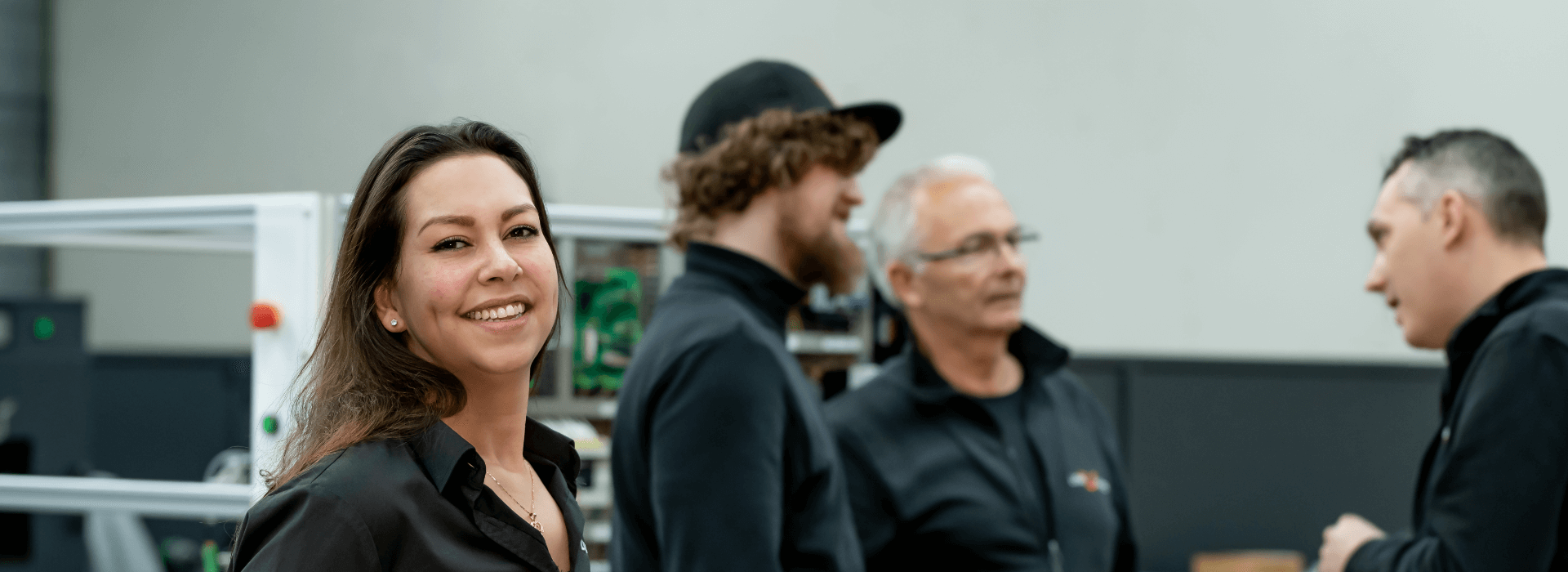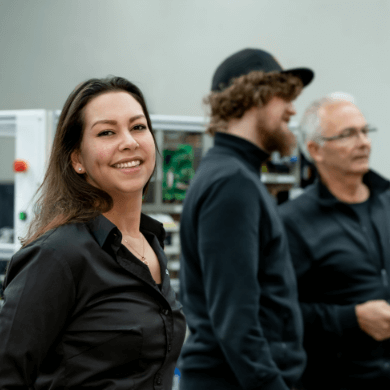What is a laser beam?
A laser beam is an intense light beam where all the energy can be focused into a very small point. Due to its extremely high power density, it can cause materials to discolor, melt, or even evaporate.
Sort by
A laser beam is an intense light beam where all the energy can be focused into a very small point. Due to its extremely high power density, it can cause materials to discolor, melt, or even evaporate.
In a fiber laser, the laser beam is generated in an optical fiber. As a result, an optical fiber is almost always used to transport the laser beam to the processing head. The CO2 laser beam, on the other hand, is generated in a CO2 gas mixture. This laser beam has a longer wavelength (10,640 nm), enabling it to process different types of materials. A fiber laser is particularly ideal for metals and some plastics, whereas a CO2 laser is capable of processing (mostly organic) materials that a fiber laser cannot handle.
A UV laser has an even shorter wavelength (in our case, 355 nm) compared to a fiber laser (1064 nm). This allows the UV laser to process certain materials that the fiber laser struggles with or has no effect on. The shorter wavelength also enables a smaller focus spot, resulting in a higher energy density.
A Q-switch is an opto-electronic element that functions as a gate for the laser. The pulses are created by opening and closing this gate. The downside is that the initial pulses often have much higher power than those later in the pulse train. This can result in an engraving with an uneven appearance or unsightly pits in the lines. MOPA stands for Master Oscillator Power Amplifier. Unlike the Q-switch, there is no “gate” to generate pulses; instead, each pulse is delivered by the amplifier. The precise technical explanation is far more complex. Laser manufacturers who have mastered this technology can ensure that every pulse delivers exactly the same energy. Combined with the right optics and control, this results in a perfect engraving outcome. Lion Lasers exclusively uses MOPA fiber lasers in their engraving systems.
At Lion Lasers, our “Industrial” is a fiber laser source with a fixed pulse duration. Our “Nano” fiber lasers, on the other hand, feature adjustable pulse durations. This means you can create different effects by applying shorter or longer pulses to the material.
There is a difference between a clean laser engraving and a readable marking on a product. With the heavier cutting lasers for metal, we can create that marking. However, it cannot be compared to the engraving quality of a Lion Fiber laser, which is in a league of its own. Additionally, engravings using a galvo system, like the Lion Fiber, are generally much faster. That said, engraving a part number with a Lion Metal laser is certainly a viable option, though we prefer to place it in a less conspicuous area.
Some thin materials, such as foils or thin sheets, can be very effectively cut with a galvo-controlled marking system, provided the system is equipped with a high-quality laser source. For example, silver can be cut up to 1 mm in thickness, as well as various solder foils and high-tensile stainless steel spring sheets. However, true cutting tasks are, of course, the domain of a dedicated cutting laser. With its head featuring axial gas flow and follow-focus capabilities, it is equipped to handle more standard cutting work.
All lasers used for laser processing fall under the category of hazardous lasers (Laser Class 4). However, one laser can be significantly more dangerous than another. Lion Lasers machines are always delivered with a safe enclosure. The exception is built-in modules, where the customer or integrator is responsible for providing proper safety shielding.
It is not necessary to create an entirely new Risk Inventory and Evaluation (RI&E), but you are required to include an assessment of all occupational risks in your RI&E. In most cases, you can simply add an evaluation of the new equipment (whether it’s a laser machine or something else) to your existing risk assessment.
Company personnel are subject to occupational health and safety regulations and must be protected from hazards as effectively as possible. If it is possible to safely enclose the laser, working with an open laser is essentially prohibited.
Even in a production environment, this is only allowed under strict conditions. The same rule applies: if it is possible to safely enclose the process, operating it openly is prohibited. Additionally, the Machinery Directive requires manufacturers to take all necessary measures to prevent the need for Personal Protective Equipment (PPE). PPE may only be used if it is practically impossible to enclose the process safely.
There are some fun and inexpensive laser systems available on AliExpress. However, if you’re considering using them professionally, be aware that these systems are highly unlikely to comply with European regulations, even if they have a CE logo sticker. As an employer, you would, in this case, be considered the importer and would be fully liable if any accidents occur.
Our advice: use them at home if you know what you’re doing, and only purchase reliable laser systems for professional use. This also ensures far greater operational reliability. One more tip: most of the laser goggles provided with these systems offer little to no protection against the laser. Placing a metal enclosure over the laser wouldn’t hurt for added safety.
Cleaning with a laser, also known as laser cleaning, is an excellent alternative to methods such as (sand)blasting. The laser can automatically scan a surface by writing lines with high pulse energy. By adjusting the right laser source, optics, and settings, you can, for example, activate (roughen) a surface, remove caked-on residues, strip paint, or matte a surface.
In many applications, it is possible to replace sandblasting with a laser process. This can offer advantages in terms of energy consumption and reduced waste. Blasting grit must be disposed of as chemical waste, whereas with laser cleaning, only the removed debris is collected, with no additional waste generated. However, in many cases, the laser process is still somewhat slower or requires high power levels to match the speed of sandblasting.
For processing metals, a fiber laser offers better absorption and therefore almost automatically achieves a higher energy efficiency. In the past, fiber lasers were not yet available, and the CO2 laser was the go-to device for delivering high laser power. However, due to its very low absorption rate, CO2 lasers are now an outdated technology for most metal applications. The purchase, energy, and operating costs are significantly higher compared to a fiber laser, which can achieve the same cutting speeds.


Discover all our options!